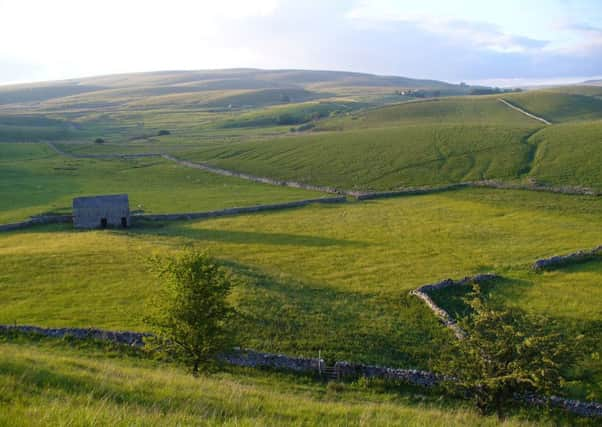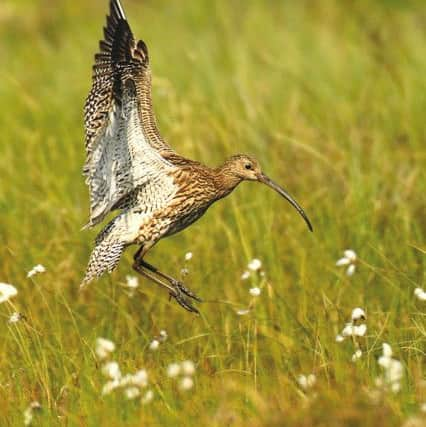Charity launches funds appeal to save precious Dales hay meadow


Yorkshire Wildlife Trust has until the end of next year to bank £175,000 in order to repay a loan used to buy Ashes Pasture hay meadow in the Yorkshire Dales, and prevent it from being resold on the open market.
Since the end of the Second World War, 97 per cent of England’s hay meadows have been lost - an area equivalent to one of half times the size of Wales. That figure was last week described as one of the biggest tragedies in the history of UK nature conservation, by Plantlife botanist Dr Trevor Dines.
Advertisement
Hide AdAdvertisement
Hide AdTo address the situation, conservationists are leading sustained efforts to preserve and enhance what precious few meadows remain.


Covering six hectares, Ashes Pasture, which is nestled between the iconic peaks of Pen-y-Ghent and Ingleborough in picturesque Ribblesdale, is Yorkshire Wildlife Trust’s latest attempt to rescue the wildife-rich habitat across the region.
The charity bought the plot from a farmer using a loan from independent grant-makers, the Esmée Fairbairn Foundation, with the intention of trebling its size but the money must be paid back in full to avoid the land being resold.
It is one of just two upland hay meadows managed by the Trust in the whole of Yorkshire. The other is Yellands near Muker and together their total area is just 10 hectares.
Advertisement
Hide AdAdvertisement
Hide AdBernie Higgins, the Trust’s living landscapes manager for North Yorkshire, said: “These are such incredibly rare habitats so it is all the more important that we step in and do something about it to manage them properly and so they can continue to exist.


“Esmée Fairburn have handed us a lifeline for Ashes Pasture and we need to repay them. If the land is allowed to hit the open market the future of this stunning site is precarious and potentially lost to wildlife forever.”
The Trust plans to raise most of the money they need to secure the site’s future from charitable trusts and other funders, but a shortfall of £39,000 has been identified.
Miss Higgins said: “We’ve had a heart-warming response from our membership, raising more than £17,000 within the opening days of the appeal. Without the help of supporters we won’t be able to save this site and we urge anyone who is in a position to do so to give generously.”
Advertisement
Hide AdAdvertisement
Hide AdAshes Pasture comes into its own in the summer, the Trust said. Its grassland is dotted with orchids and other flowering plants and attracts bees.
The area is also said to be an important breeding site for birds such as curlews and meadow pipits - a species the RSPB says has suffered a UK population decline since the mid-1970s and is included on the amber list of conservation concern.
Black grouse are also occasionally reported close to the grassland in Ribblesdale and under the Trust’s management, efforts are being made to provide extra habitats by creating a mosaic of tall and short vegetation and to provide food to help feed chicks.
An area of gully woodland on the eastern side of the site follows a stream and adds further diversity to the landscape, and the pasture is currently grazed by cattle and sheep in autumn and winter to help maintain its diverse flora.
Advertisement
Hide AdAdvertisement
Hide AdExplaining the benefits of making the meadow bigger, Miss Higgins said: “Expanding this nature reserve helps us to create a network of wildlife refuges in this area of the Dales, improving the future for many important plants and animals.”
HABITAT UNDER THREAT
According to current estimates, there are only 1,000 hectares of traditional upland hay meadow left in England.
The northern Pennine valleys are considered to be strongholds, including in Swaledale and Wharfedale.
Conservationists say that the best meadows contain up to 120 flowering plants, including globeflower, lady’s mantle, wood crane’s bill, pignut, oxeye daisy and devil’s bit scabious.
Advertisement
Hide AdAdvertisement
Hide AdDecades of intensive land management is blamed for meadow losses.
A recent survey of meadows in the Yorkshire Dales National Park found that less than five per cent could now be described as herb-rich.